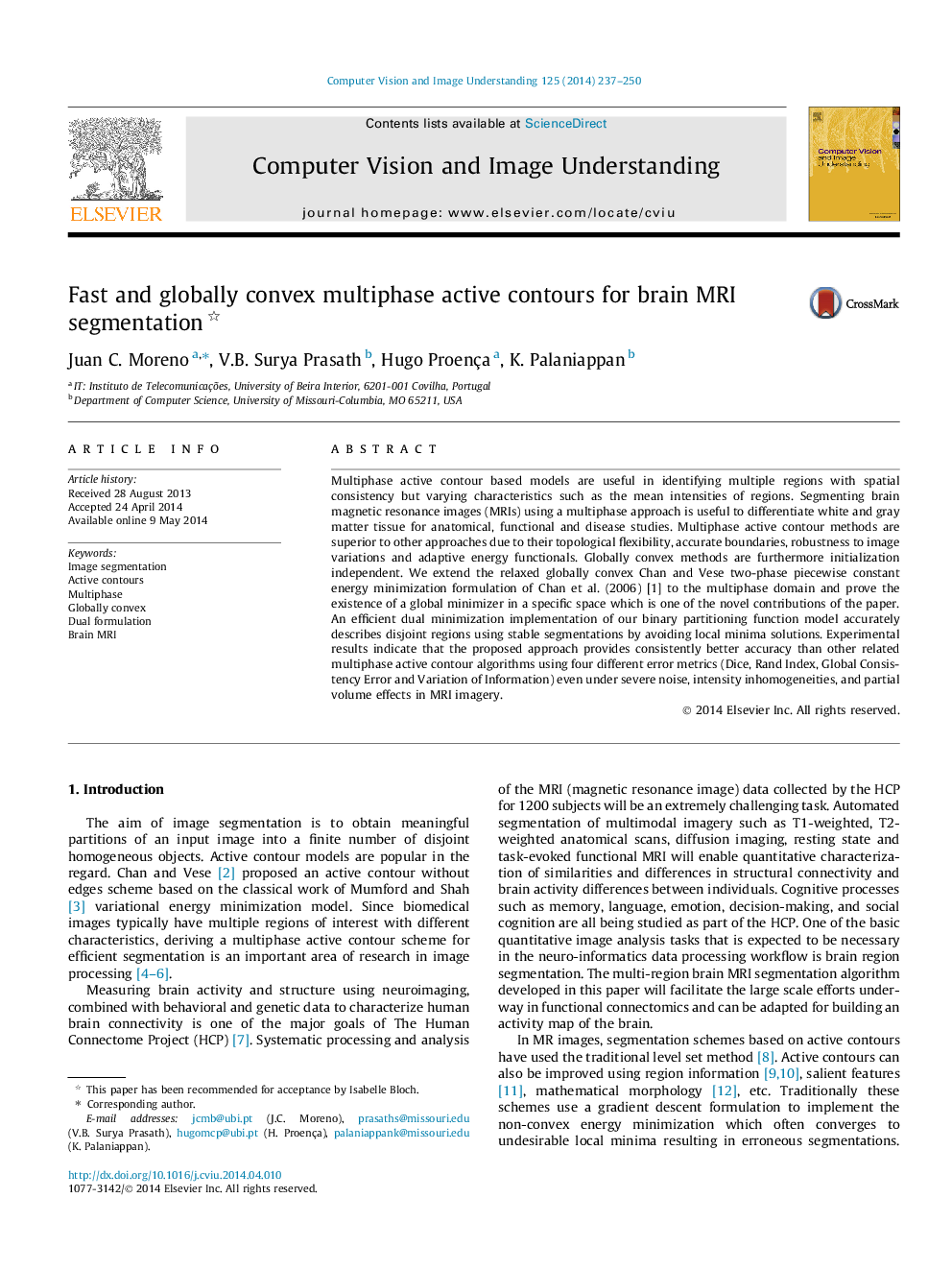| Article ID | Journal | Published Year | Pages | File Type |
|---|---|---|---|---|
| 527595 | Computer Vision and Image Understanding | 2014 | 14 Pages |
•A multiphase active contour model for image segmentation is proposed for brain MRI images.•Following a relaxed convex formulation, a fast algorithm using dual minimization is implemented.•Compared with other multiphase active contours, the proposed model performs well.•Extensive experimental and comparison results indicate the usefulness of the model for brain MRI image segmentation.
Multiphase active contour based models are useful in identifying multiple regions with spatial consistency but varying characteristics such as the mean intensities of regions. Segmenting brain magnetic resonance images (MRIs) using a multiphase approach is useful to differentiate white and gray matter tissue for anatomical, functional and disease studies. Multiphase active contour methods are superior to other approaches due to their topological flexibility, accurate boundaries, robustness to image variations and adaptive energy functionals. Globally convex methods are furthermore initialization independent. We extend the relaxed globally convex Chan and Vese two-phase piecewise constant energy minimization formulation of Chan et al. (2006) [1] to the multiphase domain and prove the existence of a global minimizer in a specific space which is one of the novel contributions of the paper. An efficient dual minimization implementation of our binary partitioning function model accurately describes disjoint regions using stable segmentations by avoiding local minima solutions. Experimental results indicate that the proposed approach provides consistently better accuracy than other related multiphase active contour algorithms using four different error metrics (Dice, Rand Index, Global Consistency Error and Variation of Information) even under severe noise, intensity inhomogeneities, and partial volume effects in MRI imagery.
